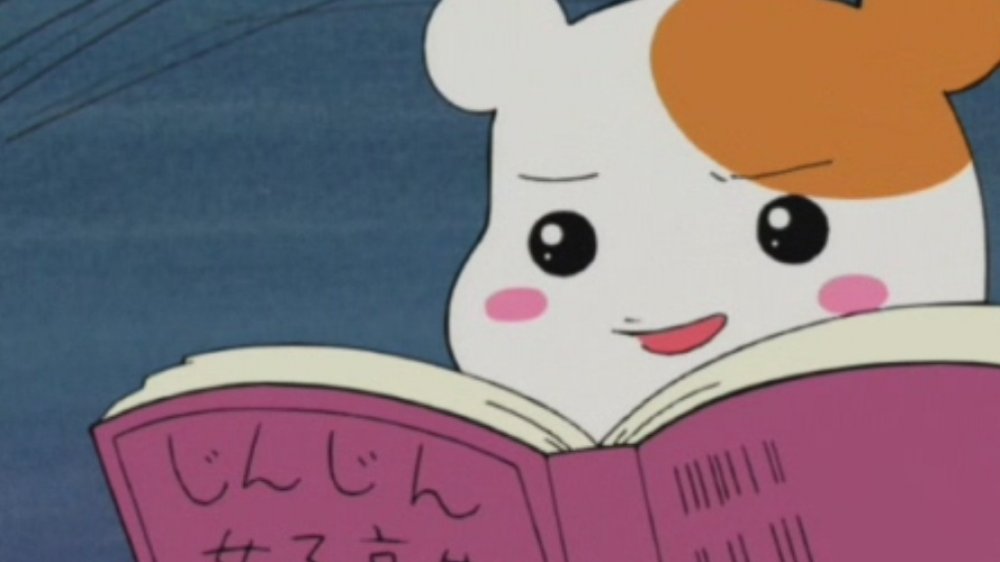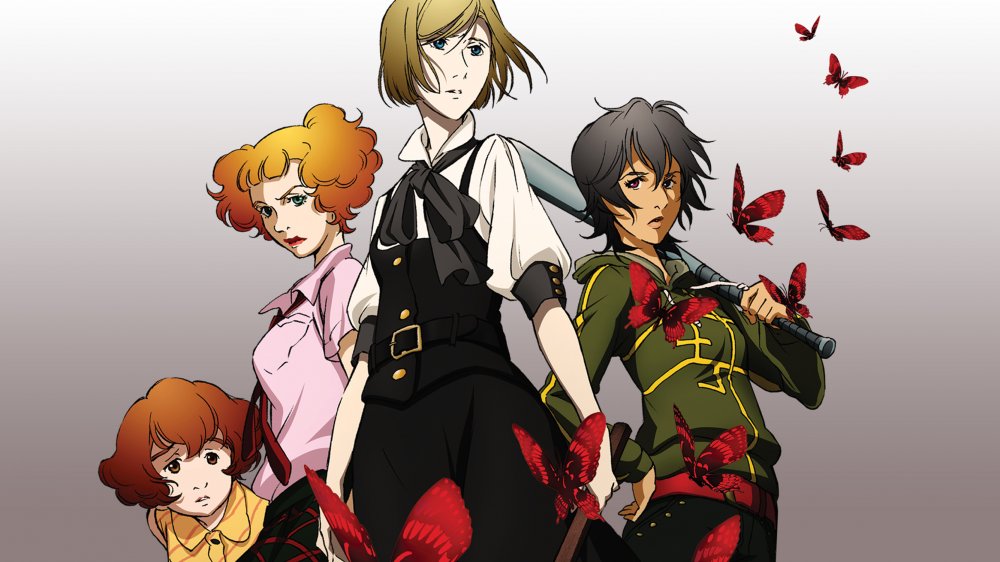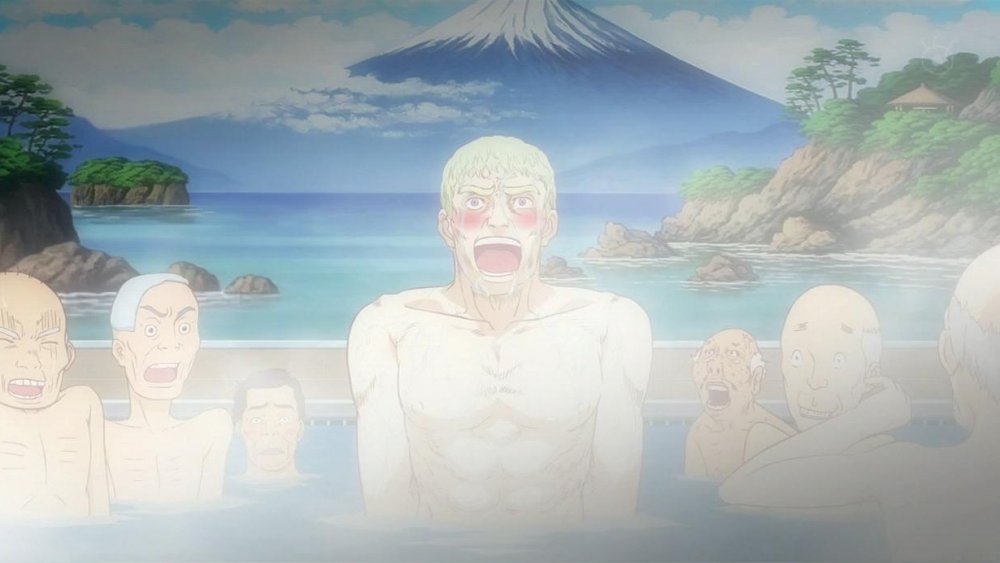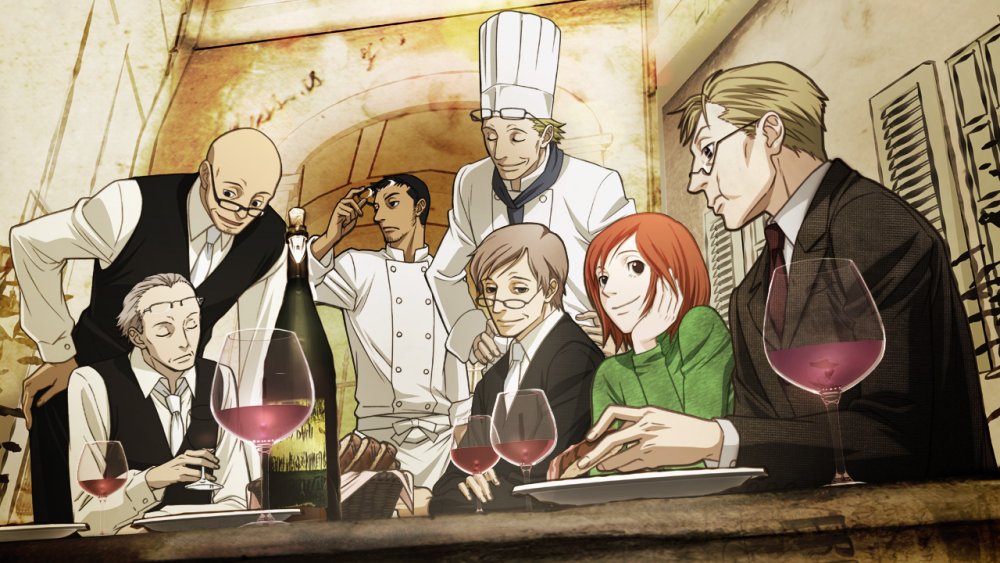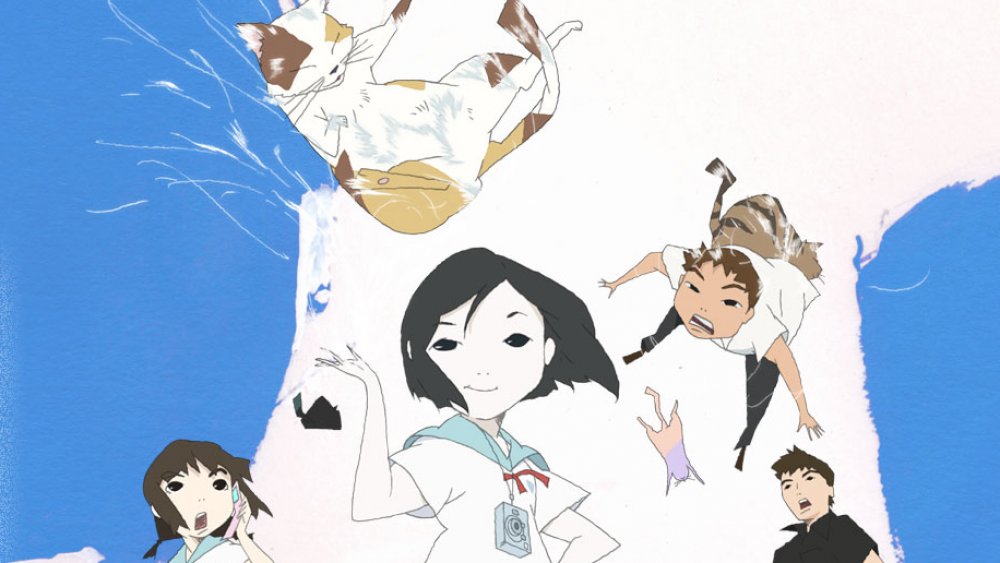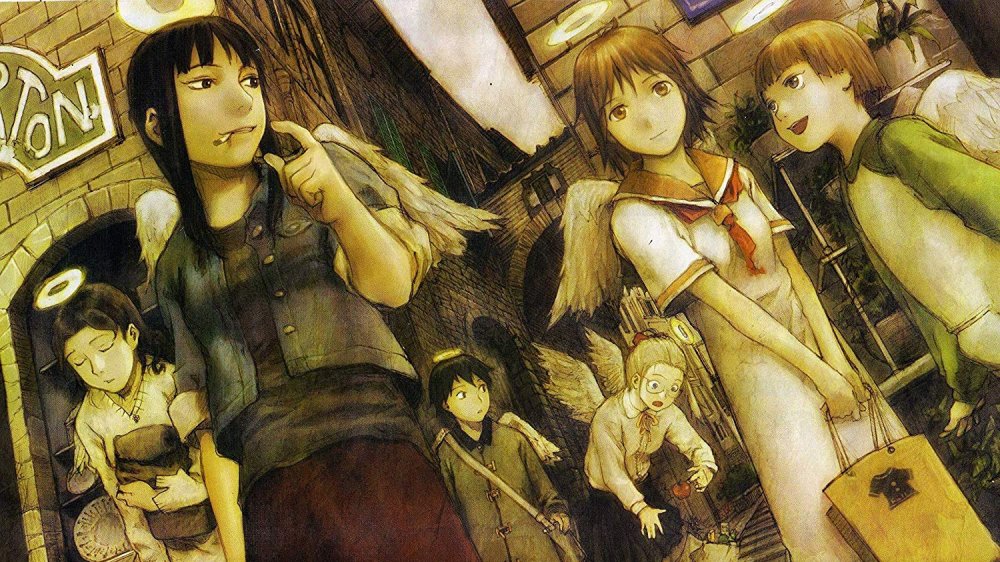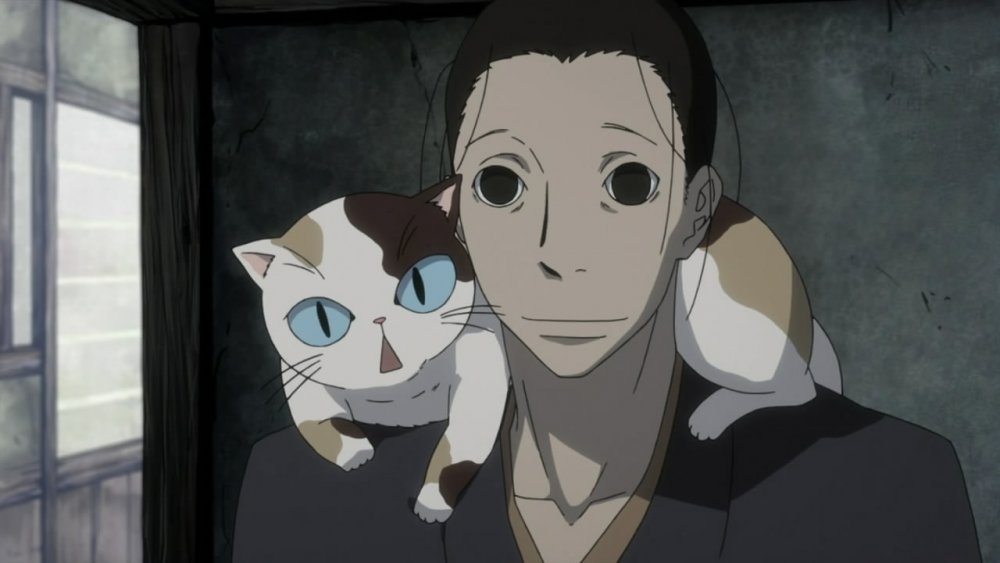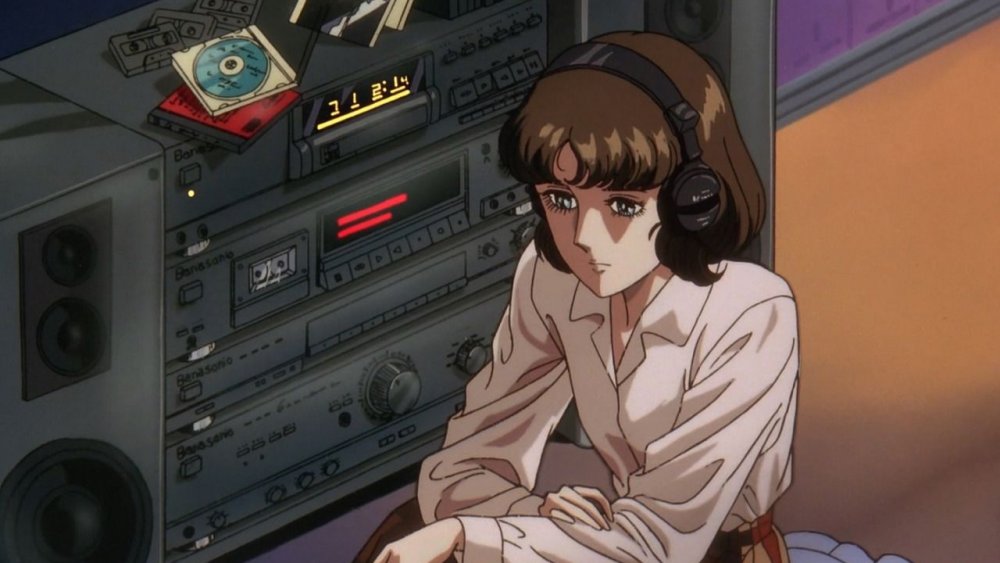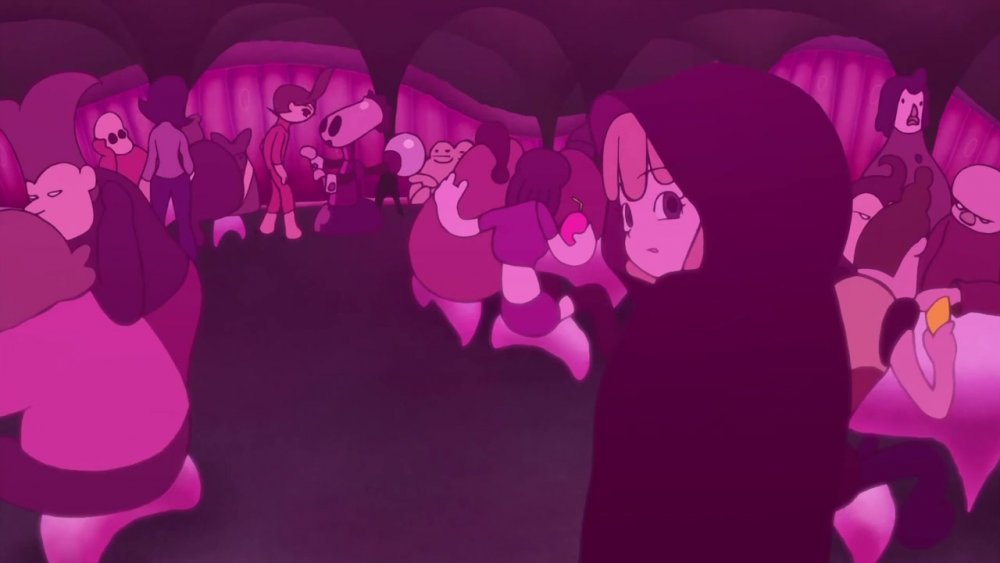The Best Anime You've Never Heard Of
Naruto, Sailor Moon, My Hero Academia — you've read them, watched them, cosplayed them, and otherwise loved them. They are titans of anime, beloved the world over for their twisty plots and sympathetic characters. And they're not exactly unknown quantities out in the wider world, either. After all, Dragon Ball Z's Goku stars in the Macy's Thanksgiving Day Parade. The world is anime-savvy, and all the better for it.
But for every anime juggernaut a la One Piece or Jojo's Bizarre Adventure, there's an obscure title out there, waiting to be discovered. Anime is, of course, a medium and not a genre, filled with heartfelt dramas, rip-roaring sea stories, and dizzying space operas, with more produced each and every day. Some anime, naturally, gets lost in the shuffle, no matter how worthwhile a watch they might be. What's a fan to do? Join us as we explore the best anime you've never heard of, of course! We're here to guide you through the world of anime obscurities, from the tenderest school stories to the headiest heights of science fiction — giant robots, magical girls, and masterless samurai included.
Ebichu is an adorable, R-rated anime you've never heard of
Once upon a time, there was a hamster named Ebichu. She was a content little thing, happy to don her frilly pink apron, do her master's dishes, and enjoy the occasional nibble of Camembert cheese. But all was not well in her fairy tale ... especially since it wasn't a fairy tale at all. Ebichu is a raunchy comedy starring a warm-hearted hamster, the 20-something woman who owns her, and all the deprived, depraved, and altogether desperate people that inhabit their world.
Weirdness abounds in the world of Ebichu, especially in the bedroom. Our hamster heroine might be a starry-eyed dreamer, but she's also the mysterious Ebichuman, superhero extraordinaire, who comes to the aid of impotent couples. Neighbors include Maa-kun, a soft-spoken weirdo who nurses a bizarre fetish for the hamster next door. Episodes center around perverse phone calls, clandestine affairs, and macabre jokes involving hamsters and blenders. Hamtaro this is not, but therein lies the joy of Ebichu. It's as adorable as a grade-schooler's favorite cartoon and as R-rated as anything you've ever seen. Sit back, relax, and let Ebichu take you on a journey through housekeeping, deadbeat boyfriends, and all the weirdness people get up to behind closed doors.
Red Garden mixes magic with horror
Red Garden lies somewhere between the sparkly meadows of magical girl anime and the bloodied halls of out-and-out horror. Our four protagonists — Rose, Rachel, Claire, and Kate — are typical New York City teenagers, until the morning they wake with no recollection of the previous night's events. As a mysterious pair of elegantly dressed adults informs them, they're dead and have been reanimated to fight a war on behalf of a shadowy organization called Animus. By day, the girls continue to live their lives as students, daughters, and friends, but by night, they face "monsters" that appear to be everyday people gone suddenly, violently insane. They have a choice, of sorts: Beat the monsters to death or lose the reanimation they've been granted and die for real.
Red Garden doesn't stop at subject matter when it comes to taking a unique approach. Early episodes feature sudden bursts of singing, musical-style, and an aesthetic that looks more like Western fashion illustration than anime as fans know it. Moreover, the US setting isn't just set dressing. It's a real, researched part of these girls' lives. Red Garden isn't quite like anything else you've ever seen before, from its mashed-up genre to its Western setting, yet it never overwhelms. The story, at its core, is always centered on its four heroines and the surprising, stirring, and even sublime ways they survive their circumstances.
Thermae Romae is an obscure anime all about bathing
Ancient Rome, that land of poetry and politics, is a pretty juicy setting for fiction. Caesar, Corinthian columns, a deity for every conceivable situation — there's a reason audiences love Gladiator, Rome, and I, Claudius. Thermae Romae is part of this storied pantheon, starring Lucius, a befuddled Roman architect who specializes in baths. It's just that most of the story's action takes place in modern Japan, the locale to which Lucius is so often spirited, where he's dazzled by advances in plumbing, leisure, and temperature control. That's right. Thermae Romae is about an ancient Roman's love of Japanese bathing and his subsequent attempts to bring the technical advances he experiences back home with him.
How does he travel? Why is this happening to him? Does it happen to others? Not the point. The joy of Thermae Romae lies in its naked absurdity — a dude loves baths and gets to experience two of the greatest bathing cultures in history. It's never anything but hilarious to watch Lucius lose his mind over shampoo hats, bidets, and water parks, and honestly, it's pretty heartwarming to see him bring the delights he glimpses back to Rome. Thermae Romae is a love letter to relaxation, togetherness, and the sheer pleasure of warm water on sore muscles. Odd subject matter for an anime, you might think, and you'd be right. But Lucius' wonder upon discovering the joy of cold ice cream after a hot bath will convince you it's a worthy focus indeed.
You've probably never heard of Gunbuster, but it's inspired quite a few classics
Decades in the future, a race of insectoid aliens threatens the Earth. Fantastic new fighting machines are created, piloted by scrappy youngsters selected for their grit, cunning, and bravery. Sounds familiar? It should. Gunbuster isn't just a classic giant robot anime but one of the absolute granddaddies of the genre. You've likely already enjoyed its descendants in the form of Gurren Lagann or Darling in the FRANXX or perhaps in its outright sequel, Diebuster. Yet even a total newbie to mecha anime can enjoy Gunbuster. That's how brash, bold, and absolutely brilliant it is.
Much of its success lies in its core duo. Noriko, our protagonist, is the clumsy daughter of a legendary admiral, while Kazumi is the top mecha pilot at their academy, as admired for her skills as her beauty. Fate throws them together, creating a bond that powers the series through school hijinks, interstellar action, and an utterly iconic ending. Gunbuster is the beating heart of the mecha genre, a hot-blooded tribute to giant robots and the teens who pilot them. No wonder so many stone-cold classics trace their lineage back to its bright beginning.
Neighborhood Story is a lovely tale about growing up
Ah, to be an adolescent artist. The future stretches long and wide before you, waiting to be filled with your genius, but until you finish high school, it remains off-limits. Neighborhood Story takes place within this waiting room of an age, centering the experiences of Mikako and Tsutomu, students at a Tokyo arts high school who can't quite figure out what they are to each other. Neighbors since childhood, their relationship has changed markedly since the days of diapers and building blocks, and not just because they have dreams of joining the fashion industry some day. They're different people, becoming still more different as the days go on, and they have no idea whether their paths are meant to intertwine or diverge.
Neighborhood Story is a tender tale at its heart, despite its many moments of comedy and over-the-top drama. Those familiar with the story's sequel, Paradise Kiss, will know how things turn out between the starring pair, but that doesn't diminish Neighborhood Story's appeal one bit. If anything, it might just make you more curious. This is a story about the demands creativity makes upon love, the sacrifices an artist is called to make, and the moment in which a young person realizes that the future has finally arrived. It's as complex, messy, and heartfelt as its protagonists, and it's an absolute classic for it.
Ristorante Paradiso is a delicious slice-of-life
Nicoletta, a young woman raised by her grandparents in the wake of her parents' divorce, moves to Rome out of a long-simmering desire for revenge. Having tracked her mother down to Casetta dell'Orso, a restaurant just outside the city's center, she prepares to strike, only to fall in love with the easy rhythms of Italian life. Casetta dell'Orso is as much a community as it is a restaurant, beloved for its delicious food as well as its patient, handsome waitstaff. As her thirst for vengeance fades, Nicoletta discovers an entirely new way of life ... and finds she has less and less desire to give it up.
Ristorante Paradiso is slice-of-life anime at its finest. Casetta dell'Orso is the star, as much as any of the human characters, the sort of place that feels imbued with love, from the wallpaper to the silverware. It's a true delight to watch characters come and go within it, revealing their wishes, regrets, hopes, and disappointments, and often finding that their time at the restaurant has changed them. This is an anime about the meandering paths that human lives tend to take despite the best-laid plans and how much of a gift that can be. Nicoletta and the Casetta dell'Orso staff's lives might be quiet, but as Ristorante Paradiso proves, that doesn't mean they aren't enthralling down to the last delicious detail.
Windy Tales will blow you away
Windy Tales follows a small group of high schoolers as they discover the power of wind manipulation. But this isn't a high-octane adventure series. In fact, it's a slow-paced school anime. Magic is present, to be sure — the whole story begins when Nao, our heroine and president and the Digital Camera Club, discovers a cat who can control the wind — but it's more of a canvas upon which the characters express themselves than the draw of the story itself. Windy Tales is, above all else, about people learning to connect, with themselves and with others. That some of them can push and pull the very air is just one more way of expressing this central theme.
That Windy Tales succeeds at bringing together these two disparate halves, magic and the mundane, is a testament to its success. A teacher's recollection of his travels in Malaysia, the elegant dance of a cat on a rooftop, a village of wind-manipulators — all of these elements and more blend together in Windy Tales' sublime current of story. Its unique, jagged visuals capture details as fine-grained as the snap of a skirt against the wind and as grand as a violent typhoon. This is an anime to be savored, as much an experience as it is a linear story. You won't just enjoy it. You'll find yourself lost within it like a leaf swept up in blustery autumn afternoon.
Haibane Renmei is an obscure anime that's full of mystery
Rakka, a young girl with no memory of her past, wakes one day in a guest room she doesn't recognize. As it turns out, she's joined the "Haibane," a group of women with nonfunctional wings, who live out their quiet days in the walled town of Glie. Their home, an abandoned school, is a placid enough place, and though Glie enforces odd rules for the Haibane (no new clothing, no approaching the town walls), they live a decent enough life. But one day, it ends. The Haibane vanish in their "Day of Flight," gone beyond the wall that blinds them to the outside world.
Though fans have debated the nature of the Haibane for years, this isn't the sort of anime that waits to be solved by the clue-savvy fan. Rather, it's an impressionistic mediation on the nature of goodness, community, and sin. The Haibane seem likely to be trapped in some sort of purgatory, but that matters so much as it provides the canvas for the anime's real preoccupation: examining exactly how self-actualization takes place. Rakka and all the other Haibane are struggling, and they won't all learn exactly what it takes to become better, happier, or more at peace. But that's the beauty of their journey. Working towards goodness is, in its own way, a goal unto itself. In devoting itself to this moral, Haibane Renmei is an exquisite ode to the ever-changing human soul.
House of Five Leaves turns samurai tropes upside down
Masanosuke is a masterless samurai living in Japan's Edo Period, which is exactly the kind of protagonist one expects to star in an anime, right? But Masanosuke isn't some brash butt-kicker ready for action. He is, in fact, a timid man, to the point that he's been released from the service of his shogun. That's how he ends up as part of the Five Leaves, a gang of bandits whose leader, Yaichi, hires Masanosuke as a bodyguard. Thus begins House of Five Leaves, an anime about outlaws and samurai that manages to spend a lot more time on conversation than killing.
The beauty of Five Leaves is in its stillness. As the story winds on and characters, settings, and relationships are explored, the anime never stumbles into dialogue, action, or drama for it's own sake. Rather, it reveals itself slowly, line by line and frame by frame, until the viewer is utterly immersed in the story it tells. This is an anime about people on the margins, finding beauty in the decrepit and sorrow in the splendid. In taking its meditative approach to characters often glamorized — ronin, brothel madams, bandits — it strikes an unforgettable contrast. House of Five Leaves is unlike any other samurai story you've seen, and therein lies its success.
Oniisama e... is all about beauty
A quick look at Oniisama e... makes one thing perfectly clear. This is an anime about beauty. No detail is spared, from characters' carefully delineated eyelashes to their long and lustrous hair. And given the fact that Oniisama e... takes place in a girl's school, there's a whole lot of delicate detailing taking up space in every gorgeous frame. Petticoats are worn. Flowers are arranged. Ringlets are as perfectly molded as carved banisters.
This is pleasant to look at, of course, but as the anime winds on, this emphasis on aesthetics is revealed as a pillar of the story. Nanako, our heroine, is utterly unprepared for the politics of private school life, and even less so for the ones that govern the elite sorority to which she gains admittance. Here, beauty is as personal as grades, family, or love, both jealously guarded and tenderly expressed. Nanako's journey through the trials and tribulations of adolescence are expressed in these details with such precision, and shots of porcelain dolls and locks of hair catching the sun become the series' most searing symbols. In focusing on the elegant details of student life, Oniisama e... is a tribute to the power of showing rather than telling, and it's a masterpiece of adolescent anime.
Kaiba is an unknown anime with cute visuals and deep themes
Director Masaaki Yuasa has stepped into the spotlight in the years since Kaiba premiered, having directed the terrifying anime Devilman Crybaby, Ping Pong, and even an episode of Adventure Time. But everything that has made him the luminary he is can be seen in Kaiba, and indeed, it shines as brightly as any of his more famous work. Set in a space-faring future where the digitization of the mind means life beyond physical death, this anime follows Kaiba, a boy with a mysterious hole in his chest and, somehow, no memories to speak of. Lost in the swirl of a society in flux, he struggles to find purchase and, most critically of all, answers.
Kaiba is a notably cute anime, its visuals reminiscent of Osamu Tezuka's most kid-friendly work. Bodies are soft and plush-looking, the edges of spaceships are all rounded off, and even the harshest environments are crowded with friendly-looking beasts and beings. But the effect of this isn't merely endearing, it's entirely disorienting. In meshing an adorable aesthetic with a story about loss and personhood, Kaiba leads the viewer into entirely unfamiliar territory, upending all easy assumptions about where the plot is going and who the characters are. In so doing, Kaiba becomes something more like a fairy tale than a sci-fi saga — frightening, enchanting, and affecting on a primal level you won't easily forget.

